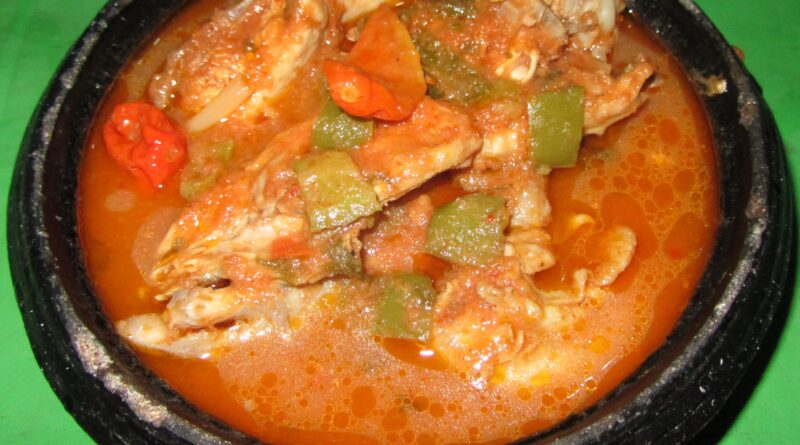Kedjenou
Unveiling the Delicious Secrets of Kedjenou: A Culinary Journey Through West Africa
Introduction: In the realm of African cuisine, there exists a treasure trove of flavors waiting to be discovered. Among them, one dish stands out for its rich history, tantalizing aromas, and mouthwatering taste – Kedjenou. Originating from the Akan people of West Africa, particularly the Ivory Coast and Ghana, Kedjenou has gradually captured the hearts and palates of food enthusiasts worldwide. In this culinary journey, we delve into the depths of Kedjenou, exploring its origins, ingredients, preparation, and the cultural significance that makes it a beloved dish across the region.
A Glimpse into the Origins: Kedjenou’s roots trace back centuries, deeply embedded in the traditions of West African communities. The name itself, “Kedjenou,” is derived from the Baoulé language spoken in the Ivory Coast, roughly translating to “shaken” or “mixed” in English. This hints at the cooking method central to the dish’s preparation, where ingredients are carefully combined and cooked in a sealed pot over low heat, allowing flavors to meld and intensify.
Ingredients: The Heartbeat of Kedjenou At the core of Kedjenou’s allure lies its simple yet flavorful ingredients, reflecting the agricultural abundance of West Africa. The primary components typically include tender pieces of chicken or other meats, such as lamb, goat, or even fish, along with an array of fresh vegetables like tomatoes, onions, bell peppers, and eggplant. These ingredients are harmoniously seasoned with an assortment of spices, including ginger, garlic, chili peppers, and a hint of aromatic herbs like thyme or bay leaves.
Preparation: The Art of Slow Cooking The magic of Kedjenou unfolds through the meticulous preparation process, where each step is imbued with care and attention to detail. The first step involves marinating the meat pieces in a flavorful blend of spices, allowing them to absorb the aromatic essence fully. Next, the marinated meat is layered with an assortment of vegetables in a heavy-bottomed pot, ensuring each ingredient contributes its distinct flavor to the dish.
Once the pot is tightly sealed, it is placed over low heat, allowing the ingredients to cook slowly in their own juices. This gentle cooking method results in tender, succulent meat infused with the vibrant flavors of the vegetables and spices, creating a harmony of taste and texture that is uniquely Kedjenou.
Cultural Significance: A Taste of Tradition Beyond its culinary appeal, Kedjenou holds profound cultural significance within West African communities. Traditionally prepared for special occasions and communal gatherings, this dish serves as a symbol of hospitality, unity, and celebration. The act of sharing a steaming pot of Kedjenou with loved ones fosters a sense of camaraderie and connection, reinforcing the bonds that tie families and communities together.
Moreover, Kedjenou embodies the resourcefulness and ingenuity of West African cuisine, utilizing locally sourced ingredients and simple cooking techniques to create a dish that is both satisfying and nourishing. In a world increasingly dominated by fast food and processed meals, Kedjenou serves as a reminder of the joys of slow-cooked, homemade fare that feeds not only the body but also the soul.
Exploring Variations: From Village to Table While the traditional recipe for Kedjenou remains cherished, modern interpretations of this classic dish have emerged, reflecting the diverse tastes and culinary innovations of contemporary chefs. Some variations may incorporate additional ingredients such as okra, plantains, or even peanut butter, adding depth and complexity to the flavor profile.
Furthermore, Kedjenou’s versatility extends beyond meat-based versions, with plant-based adaptations catering to vegetarian and vegan diets. By substituting meat with hearty vegetables like mushrooms or tofu, these variations offer a plant-powered twist on the beloved West African staple, ensuring that everyone can partake in the culinary delight that is Kedjenou.
Conclusion: A Culinary Odyssey In conclusion, Kedjenou stands as a testament to the rich tapestry of flavors and traditions woven throughout West Africa. From its humble origins among the Akan people to its widespread popularity on tables around the world, this beloved dish continues to captivate hearts and palates alike. With each simmering pot of Kedjenou, we embark on a culinary odyssey that celebrates the essence of community, tradition, and the universal language of food. So, the next time you crave a taste of West Africa, why not embark on your own Kedjenou adventure and savor the magic of this timeless dish?



